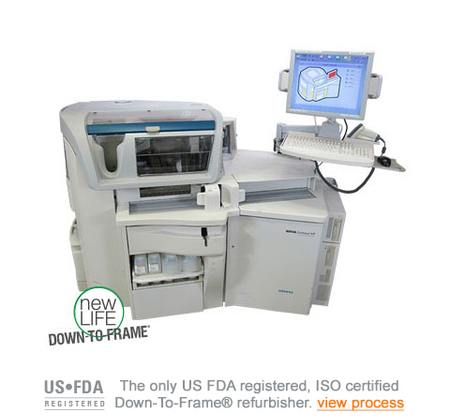
Introduction
Imagine your inbox buzzing every Friday with handpicked free local events that make your weekend unforgettable. A well-crafted weekend events newsletter brings communities together, boosts attendance at local gatherings, and keeps readers looking forward to every issue. Whether you’re a small-town organizer or a city marketer, this engaging newsletter blueprint will guide you step by step. You’ll learn how to select top events, design eye-catching layouts, write compelling copy, and measure success. Ready to create a must-read local weekend guide? Let’s dive in.
1. Define Your Audience and Goals
Every great newsletter starts with clarity on who you’re talking to and why.
- Identify your readers: Young families? College students? Retirees?
- Set clear goals: Increase event attendance, grow your subscriber list, or boost local business support.
- Choose a tone: Casual and fun for a youthful crowd or warm and informative for families.
By knowing your audience, you can tailor event picks and writing style to match their interests.
2. Curate High-Value, Free Local Events
Your readers subscribe for unique, free local events they can’t find elsewhere. To curate the best list:
- Research multiple sources: Check community calendars, social media groups, and local blogs.
- Prioritize variety: Include arts, music, outdoor adventures, family activities, and foodie experiences.
- Verify details: Confirm dates, times, locations, and cost (always note “free entry”).
Limit your list to 5–7 top picks. A concise selection keeps readers from feeling overwhelmed.
3. Craft an Eye-Catching Subject Line
The subject line drives open rates. Make it irresistible:
- Use numbers: “7 Free Events to Brighten Your Weekend”
- Include emojis sparingly: “🎉 Top 5 Free Local Concerts This Saturday”
- Create urgency: “Don’t Miss These Free Weekend Festivals!”
Aim for 40–60 characters so the full subject shows on most devices.
4. Design a Clean, Mobile-Friendly Layout
Over 70% of subscribers view email on phones. Your design must adapt:
- Single-column format: Ensures easy scrolling.
- Large headings and images: Grab attention at a glance.
- Clear call-to-action buttons: “Add to Calendar” or “Get Directions.”
- Consistent brand style: Use your logo, colors, and fonts to build recognition.
Whitespace is your friend. A clean look helps readers focus on each event.
5. Write Engaging Event Descriptions
Each event entry should include:
- Event name and date/time: Bold the name for quick scanning.
- Brief description: Two or three sentences that highlight why it’s special.
- Location with link: Embed a Google Maps link or address.
- Call to action: “RSVP here,” “Learn more,” or “Join the fun.”
Use simple words and active voice. For example:
Sunset Movie in the Park (Saturday, 7 PM): Bring blankets and snacks for a free outdoor screening of a family-friendly film. Get Directions
6. Add Value with Extras
To make your weekend events newsletter indispensable, include bonus sections:
- Local spotlight: Feature a small business offering free samples or live demos.
- Insider tips: Best parking spots or nearby coffee shops.
- Reader submission: Encourage subscribers to share event photos or reviews.
- Weather forecast: A simple 3-day outlook to help plan outdoor activities.
These extras deepen engagement and community feel.
7. Optimize Send Time and Frequency
Timing is key for open rates and engagement:
- Send on Thursday afternoon or Friday morning: Gives readers time to plan.
- Maintain a consistent schedule: Weekly newsletters build trust and anticipation.
- A/B test send times: Try different slots and compare open rates for your audience.
Avoid weekends or late evenings when inboxes are less active.
8. Track Performance with Key Metrics
Measuring success helps you refine your strategy:
- Open rate: Indicates subject line effectiveness.
- Click-through rate: Shows how engaging your content is.
- Subscriber growth: Tracks word-of-mouth and shareability.
- Event attendance feedback: Survey subscribers about which events they attended.
Use an email platform with built-in analytics. Review metrics monthly and adjust content accordingly.
9. Encourage Sharing and Referrals
Turn subscribers into advocates:
- Add “Forward to a Friend” links: Easy way for readers to share.
- Offer incentives: “Refer 3 friends and get exclusive local deals.”
- Promote on social media: Share snippets of your newsletter on Facebook and Instagram.
- Invite feedback: Simple polls or comment links keep the conversation going.
Word-of-mouth can dramatically expand your reach.
10. Continuously Improve with Feedback
A newsletter is never “done.” Keep it fresh:
- Survey your audience: Ask what events they love or topics to add.
- Monitor community calendars: Add new recurring events or seasonal favorites.
- Refresh design seasonally: Update images and color schemes to match holidays or local festivals.
- Test new sections: Try a “Featured Volunteer Opportunity” or “Local History Corner.”
Regular tweaks based on data and feedback ensure your newsletter stays relevant.
Conclusion
Creating a standout weekend events newsletter takes planning, creativity, and consistent effort. By defining your audience, curating top free local events, and crafting eye-catching designs, you’ll boost open rates and community engagement. Remember to write clear, simple descriptions, add valuable extras, and track key metrics to refine your approach. Encourage sharing, listen to subscriber feedback, and keep your content fresh with seasonal updates. Follow this blueprint to deliver an engaging local weekend guide that readers look forward to every week—turning inboxes into thriving hubs of community connection and fun.










